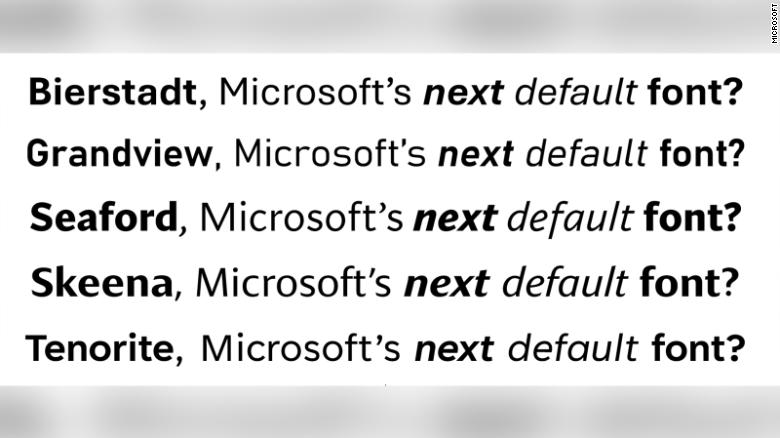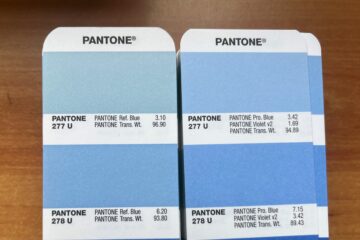Tenorite
Tenorite looks like a traditional workhorse sans serif font, but a little friendlier. It was designed by Erin McLaughlin and Wei Huang, and notably uses large dots, accents, and punctuation that make it comfortable to read at small sizes.
“We were craving something very round, wide, and crisp,” the designers said in Microsoft’s blog. “We didn’t shy away from going large and circular. In many typefaces, the punctuation is too faint, tightly spaced, or easily confusable for on-screen rendering, where clarity is key.”
Bierstadt
Bierstadt, designed by Steve Matteson, is a precise serif inspired by mid-century Swiss designs.
“Swiss typographers gravitated to grotesque designs like Helvetica because of their suitability for grid-based typography,” Matteson said. (Side note: “grotesque” in designspeak is not derogatory — it just refers to sans serifs.) “In today’s world, I believe a grotesque typeface’s voice needs a bit of a human touch to feel more approachable and less institutional.”
The name comes from one of Colorado’s 14,000-foot peaks. “When I think of Swiss type, I think of the Alps, and since I’m based in Boulder, my Alps are the Rockies,” Matteson said.
Skeena
This sans serif by John Hudson and Paul Hanslow may be the quirkiest of the bunch, while still being compact and readable as body text or presentation titles.
“We wanted to create a humanist sans serif with generous proportions and a higher than usual stroke contrast (also known as the variation in weight between thick and thin parts of the letter),” Hudson said. Skeena’s “diagonally sheared terminals” make it more distinctive.
Seaford
This “gently organic and asymmetric” sans serif by Tobias Frere-Jones, Nina Stössinger, and Fred Shallcrass is like a warm hug, or a cozy reading nook, or a cup of tea. Something makes you want curl up in it. That’s kind of what the designers were going for.
“To pinpoint the kind of familiarity…the typeface should evoke, we also looked at pictures of old armchairs,” Stössinger said. “In chair terms, we were going for a practical interpretation of a beautiful family heirloom; durable upholstery, nothing overtly plushy or nostalgic.”
Grandview
This sans serif typeface by Aaron Bell is derived from old German road and railway signage, which was designed to be legible at a distance.
Its roots in signage give this one a mechanical but sophisticated vibe.
“When I was first asked to create a font that retained the spirit and personality of the German Industrial Standard (DIN) and was more readable for body text, I wasn’t sure it was possible,” Bell said. But with a few modifications, he says Grandview preserves the voice of the original typeface but also works well for long-form text.
How to vote
Choose carefully — this could affect every Power Point presentation you have to sit through for the next decade or more. You can tweet your favorite to Microsoft here.


